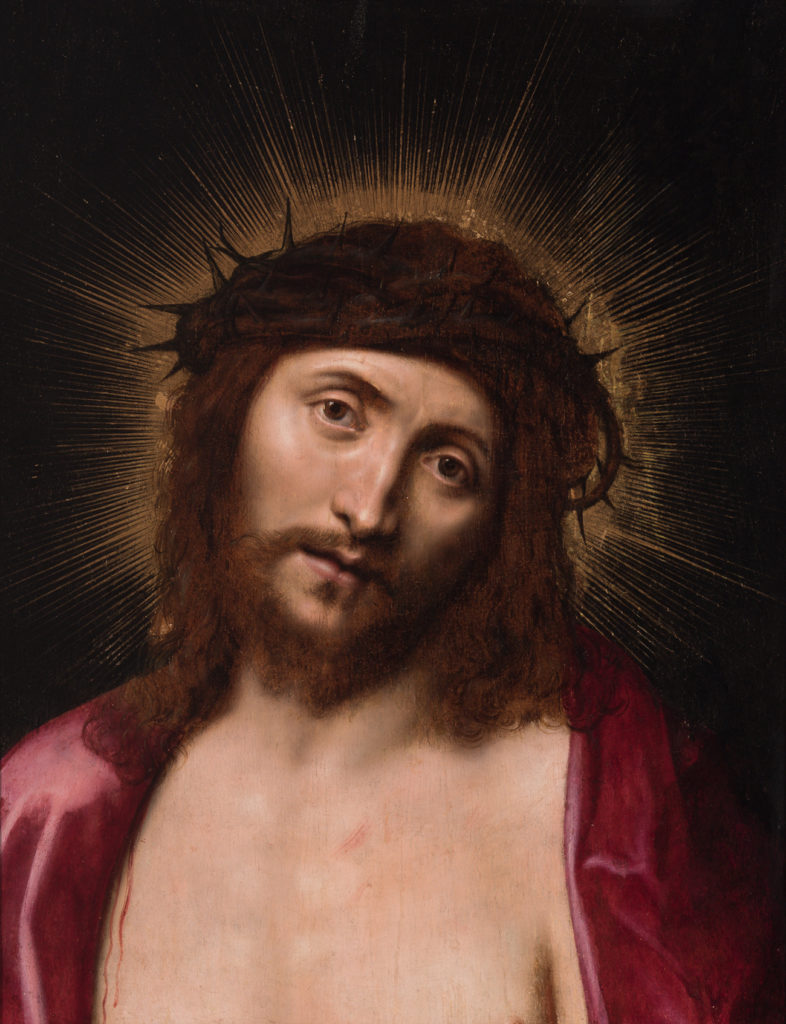Ecce Homo: Stoic Suffering in the Face of Mortality
“This is the man”. These were the words spoken by Pilate when he presented Jesus Christ, suffering and mocked, to the crowd before his crucifixion. His intention was to mock him, mocking along with the soldiers, highlighting the helplessness of the man in the face of his military might.
Throughout the history of Western art, this subject has fascinated numerous artists who have attempted a personal interpretation of this precise moment of the Passion. Most of the time the result is a slender and bleeding figure, hunched over by the suffering that is cruelly reflected in the facial features: the painter wanted to convey to the viewer the feeling of being part of the public that mocks Jesus, achieving high results of identification and empathy with the sacred subject.
The work of Correggio is especially famous in the collection of the National Gallery in London in which, according to a traditional iconography, Jesus Christ appears before the crowd, surrounded by the Virgin Mary and Saint John, wrapped in a purple cloth and with the crown of thorns.
The author of the painting presented at the Setdart auction was probably familiar with Correggio’s work: we do not know his name, but the choice of theme and the setting of the composition are reminiscent of the style of the Italian school.
However, in this exquisite work intended for private devotion there is hardly any trace of the sufferings suffered by Christ: his bare and unhurt chest shines on the dark background; the allusion to the Passion is provided only by the trail of blood that drips from his purple robe and the crown of thorns on his head. The scene is not immersed in an architectural context, there are no references to any place. This choice contributes to the subject being almost frozen, immobile in time, or rather to give it an ethereal and eternal value.
The gaze of Christ magnetically attracts the viewer, transforming the very concept of Ecce Homo: he seems to want to reiterate peremptorily that his imperturbable conscience can only be proper to a God . The lighting effects made by the artist contribute to creating this perception, clearly highlighting the figure of Christ against the dark background, crossed by the almost expansive light of the halo.
A gentle and reassuring reinterpretation of a God about to be crucified, who looks at his faithful with love.
A peculiar case within the iconography so beloved by artists of all centuries: a variant of the theme proposed in a softer key, accessible for intimate and private contemplation, up for auction at Setdart.


